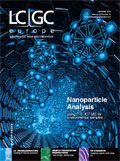Ion-Trap and Time-of-Flight Mass analysers
An excerpt from LCGC's e-learning tutorial on ion-trap and time-of-flight analaysers at CHROMacademy.com
An excerpt from LCGC's e-learning tutorial on ion-trap and time-of-flight mass analysers at CHROMacademy.com
Also known as three-dimensional (3D) ion traps, quadrupole ion traps (QIT) use oscillating electric fields (radio frequency [RF]) to trap ions in a controlled manner. A typical quadrupole ion-trap mass spectrometer consists of a ring electrode with a hyperbolic inner surface and two electrically common hyperbolic end-cap electrodes.
The ion trap is operated by applying a sinusoidal potential (fixed RF frequency) to the ring electrode while the end-cap electrodes may be grounded, biased to a constant direct current (DC) value (usually = 0), or maintained at an oscillating alternating current (AC) potential depending upon the mode of operation. Combinations of RF and AC potentials applied to the ring and end-cap electrodes are used to:
- Trap all ions within a specific m/z range
- Trap all ions above a specified m/z value
- Trap ions of a specified m/z value
- Eject ions of specified m/z values
Perhaps the most significant use of ion-trap analysers involves sequential trapping and fragmentation of specific ions to produce highly specific multistage mass spectrometry (MSn) spectral data. This is achieved using collision-induced dissociation of selected precursor ions held within the trap at increased background gas pressures. The product ions are then resonance ejected and monitored. One or many of the product ions may be retained within the trap volume for further fragmentation, making these devices very useful for qualitative analysis. While MS7 or higher is possible, MS3 or MS4 is typically the upper working limit and many modern instruments have the ability to automatically select "significant" precursor ions for further fragmentation — sometimes known as "data dependent" acquisition.
The resolution of 3D traps diminishes rapidly as the ion density increases, and there is capacity for only a limited number of ions at any one time before repulsive charges (known as the space charge effect) cause excess ions to be ejected. To avoid the effects of space charge, the number of ions within the trap are regulated to an optimum (sometimes referred to as the "1/10th level") to achieve optimum mass-to-charge analysis. Careful trap filling control also leads to improved linearity of the trap device.
Linear quadrupole ion traps (LIT), also known as two–dimensional quadrupole ion traps, have been developed from the conventional quadrupole mass analyser and can also be used to collect and inject pulses of ions coming from continuous sources.
A linear ion trap includes two pairs of rods that collect and trap ions using radio frequencies. Simple plate lenses at the ends of the quadrupole provide the DC trapping field to keep the ions confined within the mass analyser. The ion beam is reflected repeatedly between the two electrodes and a slot, made in one of the rods, allowing ions to be radially ejected.
Linear quadrupole ion traps have some reported advantages over traditional (3D) ion traps including higher ion storage volume (reduced space charge effects) and enhanced sensitivity for externally injected ions.
Orbital trap mass analysing devices are a special type of ion trap in which trapped ions cycle around a central electrode as well as oscillate in the horizontal axis. Under the influence of applied voltages, ions will oscillate in a predictable fashion, and these oscillations, known as the image current, can be subjected to a Fourier transformation to produce a mass spectrum. Orbital traps are known for their high resolution and mass accuracy, while being relatively low cost compared to their Fourier transform ion cyclotron resonance (FT-ICR) counterparts.
In time-of-flight (TOF) mass analysing, ions are extracted in short bursts (packets) within the ion source and are subjected to an accelerating voltage that causes the ions to "fly" down an evacuated tube of a set length. The flight times are correlated against at least two known masses from an infused tune compound, which allows a simple mass correlation.
The direct coupling of atmospheric pressure ionization (API) sources with TOF analysers can be problematic, because API techniques yield a continuous ion beam, whereas TOF analysers operate on a pulsed process. This issue is overcome by placing a pusher electrode at 90° to the incident ion beam that pulses to deflect a packet of ions into the mass analysing device.
In practice, LIT and TOF devices are often used in "tandem" MS devices that use the combined capabilities of the individual analysers — so-called Q-trap and Q-TOF instruments.
Table 1 shows the performance of the various mass analysing devices that have been discussed in this instalment, as well as last month's. High resolution and mass accuracy are becoming increasingly important in a wide variety of application areas such as proteomics and metabolomics to remove ambiguity in structural characterization or identification of analytes within complex samples.

Table 1: Performance of various mass analysers.

New TRC Facility Accelerates Innovation and Delivery
April 25th 2025We’ve expanded our capabilities with a state-of-the-art, 200,000 sq ft TRC facility in Toronto, completed in 2024 and staffed by over 100 PhD- and MSc-level scientists. This investment enables the development of more innovative compounds, a broader catalogue and custom offering, and streamlined operations for faster delivery. • Our extensive range of over 100,000 high-quality research chemicals—including APIs, metabolites, and impurities in both native and stable isotope-labelled forms—provides essential tools for uncovering molecular disease mechanisms and exploring new opportunities for therapeutic intervention.
New Guide: Characterising Impurity Standards – What Defines “Good Enough?”
April 25th 2025Impurity reference standards (IRSs) are essential for accurately identifying and quantifying impurities in pharmaceutical development and manufacturing. Yet, with limited regulatory guidance on how much characterisation is truly required for different applications, selecting the right standard can be challenging. To help, LGC has developed a new interactive multimedia guide, packed with expert insights to support your decision-making and give you greater confidence when choosing the right IRS for your specific needs.

.png&w=3840&q=75)

.png&w=3840&q=75)



.png&w=3840&q=75)



.png&w=3840&q=75)











